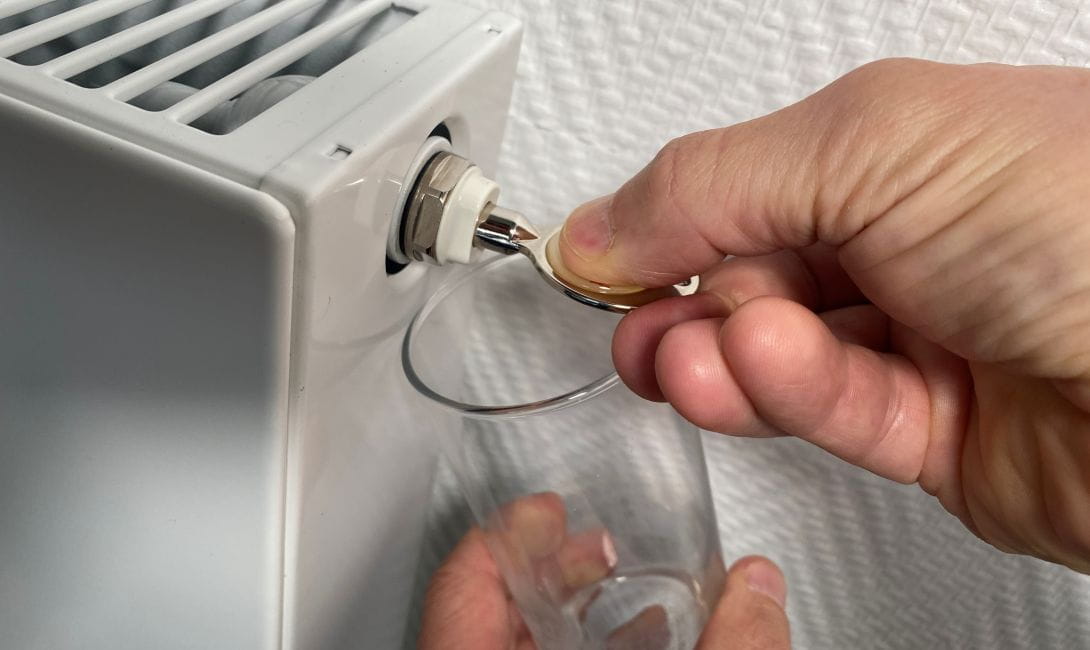- Hydronic heating
- Radiators
- Energy saving
When and how to bleed a radiator
Radiators generally require very little maintenance. However, to keep your heating system running efficiently, it’s best to bleed your radiators before the heating season. Air can get trapped in the heating system, causing the heat output to be less than optimal. To ensure you can enjoy a comfortable heat at all times, we’re happy to guide you through the process of how exactly to bleed your radiators.
Why bleed a radiator
When you bleed a radiator, you let out the air that’s trapped inside. This is important to achieve an even and comfortable heat. Since hot air naturally rises, it gets stuck at the top of the radiator and prevents the hot water from circulating throughout the entire radiator. This can easily create cold spots. The air needs to be removed so that the radiator can fill with water and heat properly. Only a completely vented radiator can deliver its full heat output and ensure a comfortable indoor climate.When to bleed a radiator
We recommend bleeding your radiators at least once a year, preferably in autumn to make sure your heating system is in top condition for a new heating season. However, if you notice that your radiators feel cold at the top or are taking a long time to heat up, it may be necessary to take action sooner. The same goes for bubbling or ticking noises. If you notice that a radiator makes strange noises when you turn up the thermostatic head, this usually means that air bubbles are moving inside the radiator. This can lead to oxygen corrosion in the radiator, so don’t hesitate to bleed it sooner.How to bleed a radiator
Bleeding a radiator is actually quite simple. All you need is a radiator bleed key, some rags or an old towel and a tray to catch excess water that might appear.Before you can bleed a radiator, you need to turn the thermostatic head fully open so that as much oxygen as possible is released from the water. Then turn off the boiler and wait a while (depending on the size of the system) to allow air to collect in the highest points of the system. When the radiator has cooled down, you can start the actual bleeding. If you’re bleeding radiators on multiple floors, you should begin downstairs and work your way up, starting on each floor with the radiator that’s furthest away from the boiler since this one likely contains the most air.
Hold the old towel and tray underneath the radiator’s bleed valve. You can usually find this at the top of the radiator in the left or right corner, on the opposite side of the thermostat. Close the thermostatic head and then carefully open the bleed valve by turning the inserted bleed key anticlockwise. You’ll hear a hissing noise. That’s the air that’s escaping. Once water starts to come out, close the valve and set the thermostatic head to the desired value. When all the radiators have been bled, turn your heating back on and check if they’re heating up properly.
Once you’re done, it’s also important to check the water pressure in the central heating system to see if it needs to be topped up. Take care when adding water. If this needs to be done frequently, it might indicate a leak in the system or a faulty expansion tank, which should be addressed sooner rather than later.
Professional help
Although bleeding a radiator is something you can easily do yourself, in some cases it’s wise to call in a professional. If you’ve never bled a radiator before or are unsure, for example, don’t hesitate to consult an HVAC engineer first. He or she will give you tips on what you can do yourself, and what you need to ask a professional to help you with. Also, if a radiator is not mounted completely horizontally, i.e., leans down towards the vent, it can be difficult to vent the radiator. In this case, you should contact a plumber.
Read more tips to prepare your heating system for a new heating season

